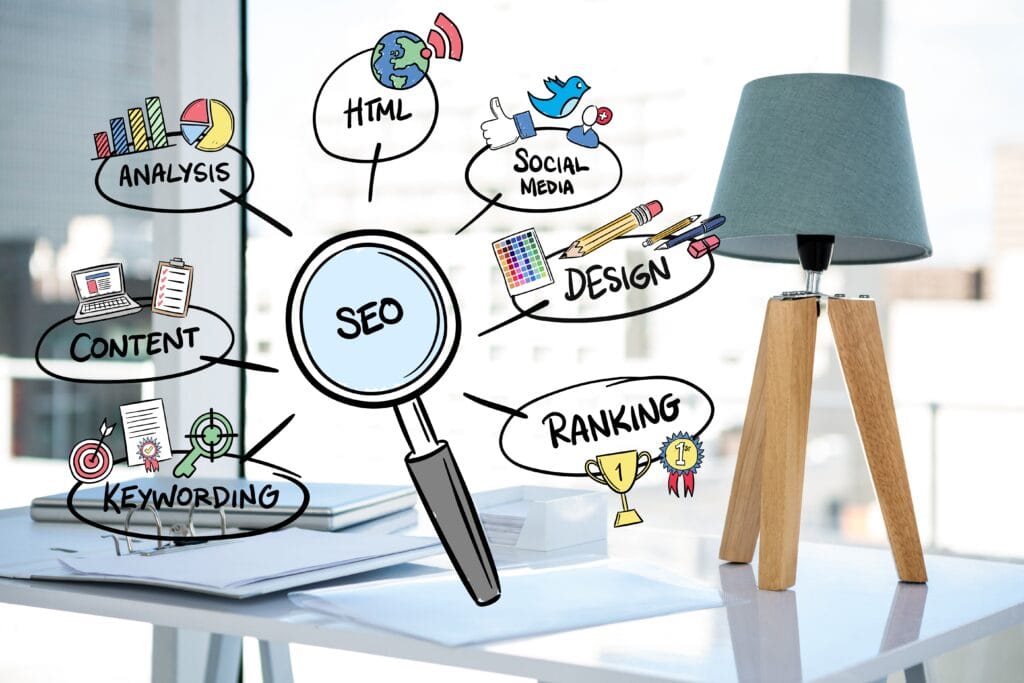Introduction Blogging Tips for Beginners
What is Blogging?
Blogging is the act of writing and publishing articles, stories, or other types of content on the internet. Initially used as a personal diary or a platform to share opinions, blogging has evolved into a powerful tool for sharing information, marketing, and even making money.
Table of Contents
Importance of Blogging in the Digital Age

In today’s digital age, blogging serves multiple purposes. It allows individuals and businesses to share knowledge, establish authority in their field, improve their online presence, and engage with a broader audience. For businesses, blogs are an essential part of a comprehensive content marketing strategy, driving traffic, generating leads, and converting visitors into customers.
History of Blogging
Blogging started in the late 1990s with the advent of personal web logs. The term “blog” was coined in 1999, and since then, blogging platforms like Blogger, WordPress, and Tumblr have emerged, making it easier for anyone to start a blog. Over the years, blogging has become more sophisticated, with a variety of tools and techniques available to enhance the blogging experience.
Getting Started with Blogging
Choosing Your Blogging Platform
The first step in starting a blog is choosing the right platform. Popular options include WordPress, Blogger, Wix, and Squarespace. Each platform has its pros and cons, so it’s essential to select one that fits your needs and technical expertise.
Setting Up Your Blog
Once you’ve chosen a platform, the next step is to set up your blog. This involves registering an account, selecting a theme, and configuring basic settings. It’s crucial to make sure your blog is easy to navigate and visually appealing to attract and retain readers.
Selecting a Domain Name
Your domain name is your blog’s address on the internet. It should be memorable, relevant to your blog’s content, and easy to spell. Consider using keywords that reflect your blog’s niche to improve your site’s SEO.
Choosing a Hosting Provider
A reliable hosting provider ensures that your blog is always accessible to readers. Popular hosting services include Bluehost, SiteGround, and HostGator. Look for a provider that offers good uptime, customer support, and scalability options.
Blog Design and Layout

Selecting a Blog Theme
A theme determines the overall look and feel of your blog. Choose a theme that aligns with your brand and offers customization options. Ensure the theme is responsive, meaning it looks good on all devices.
Customizing Your Blog Design
Customization allows you to make your blog unique. Modify colors, fonts, and layouts to reflect your brand’s personality. Most blogging platforms offer easy-to-use customization tools, even for those with limited technical skills.
Importance of a Mobile-Friendly Design
With more people accessing the internet via smartphones, having a mobile-friendly design is crucial. Ensure your blog theme is responsive and test how your site looks and functions on different devices.
Creating an Effective Navigation Menu
An intuitive navigation menu helps visitors find content easily. Organize your categories and pages logically, and use clear, descriptive labels. A well-structured menu enhances user experience and keeps readers on your site longer.
Content Creation

Understanding Your Audience
Knowing who your audience is helps you create content that resonates with them. Consider their demographics, interests, and pain points. Use this information to tailor your content and address their needs effectively.
Content Planning and Strategy
A content plan outlines what you will publish and when. It helps you stay organized and consistent. Develop a content calendar, brainstorm topics, and set deadlines to keep your blog on track.
Types of Blog Posts
Different types of blog posts serve different purposes. Common formats include how-to guides, listicles, interviews, reviews, and personal stories. Mixing up your content keeps your blog interesting and engaging.
Writing Engaging Content
Engaging content is informative, entertaining, and easy to read. Use a conversational tone, include anecdotes, and ask questions to involve your readers. Break up text with headings, bullet points, and images to make it more digestible.
The Importance of Originality
Original content sets your blog apart and establishes your credibility. Avoid copying from other sources, and always add your unique perspective. Original content also performs better in search engines, driving more traffic to your blog.
Using Visuals in Your Blog Posts
Visuals like images, infographics, and videos enhance your content and make it more appealing. They help illustrate your points and keep readers engaged. Use high-quality visuals and ensure they are relevant to your content.
How to Create High-Quality Images and Videos
Creating high-quality visuals doesn’t require expensive equipment. Use tools like Canva for images and basic editing software for videos. Focus on good lighting, clear audio, and a stable setup to produce professional-looking content.
SEO for Bloggers

Introduction to SEO
Search Engine Optimization (SEO) is the process of improving your blog’s visibility on search engines. Good SEO practices help your blog rank higher in search results, driving more organic traffic to your site.
Keyword Research for Bloggers
Keywords are the terms people use to search for content online. Use tools like Google Keyword Planner, Ahrefs, or SEMrush to find relevant keywords for your blog. Incorporate these keywords naturally into your content to improve SEO.
On-Page SEO Techniques
On-page SEO involves optimizing individual pages to rank higher. This includes using keywords in your titles, headings, and content, optimizing images, and ensuring your site is mobile-friendly.
Optimizing Blog Posts for SEO
To optimize a blog post, include your main keyword in the title, URL, and first paragraph. Use related keywords throughout the post and include internal and external links. Ensure your content is comprehensive and answers the search intent.
The Role of Meta Descriptions
Meta descriptions are short summaries of your blog posts that appear in search results. They should be compelling and include your main keyword. A good meta description can increase your click-through rate.
Using Header Tags Effectively
Header tags (H1, H2, H3, etc.) structure your content and make it easier to read. Use H1 for the main title, H2 for major sections, and H3 for subsections. This helps both readers and search engines understand your content’s hierarchy.
Internal and External Linking
Internal links connect your blog posts, helping readers find related content and improving your site’s structure. External links to reputable sources add credibility to your content. Both types of links are beneficial for SEO.
Promoting Your Blog

Introduction to Blog Promotion
Promoting your blog is essential to attract readers. There are various strategies to increase your blog’s visibility, from social media marketing to email newsletters.
Social Media Marketing for Bloggers
Social media platforms like Facebook, Twitter, and Instagram are powerful tools for promoting your blog. Share your posts, engage with your audience, and use hashtags to reach a broader audience.
Email Marketing for Bloggers
Building an email list allows you to reach your audience directly. Use email marketing to share new posts, offer exclusive content, and engage with your readers. Tools like Mailchimp and ConvertKit can help you manage your email campaigns.
Guest Posting and Collaboration
Guest posting on other blogs can introduce your
content to a new audience. Collaborate with other bloggers to share each other’s content, co-write posts, or run joint promotions.
Utilizing Blog Directories
Submitting your blog to directories like Bloglovin, AllTop, and Technorati can increase your visibility. These platforms help readers discover new blogs in their areas of interest.
The Role of Influencers in Blog Promotion
Influencers have established audiences that trust their recommendations. Partnering with influencers in your niche can boost your blog’s visibility and credibility.
Building and Engaging Your Audience

Understanding Blog Analytics
Analytics tools like Google Analytics provide insights into your blog’s performance. Track metrics like page views, bounce rate, and audience demographics to understand what’s working and what needs improvement.
Engaging with Your Readers
Engagement is key to building a loyal audience. Respond to comments, ask for feedback, and create interactive content like polls and quizzes. Show your readers that you value their input.
Building a Blogging Community
A community around your blog fosters loyalty and encourages repeat visits. Create a forum or Facebook group where readers can connect with you and each other. Regularly participate in the discussions to keep the community active.
Managing Comments and Feedback
Moderate comments to maintain a positive environment. Address constructive criticism professionally and use feedback to improve your blog. Engaging with readers in the comments section can also boost your SEO.
Monetizing Your Blog

Introduction to Blog Monetization
Monetizing your blog can turn your passion into a profitable venture. There are various ways to make money from blogging, depending on your audience and niche.
Affiliate Marketing
Affiliate marketing involves promoting products or services and earning a commission for every sale made through your referral link. Choose products relevant to your audience and disclose your affiliate relationships.
Sponsored Posts and Reviews
Brands may pay you to write posts or reviews about their products. Ensure that sponsored content is honest and aligns with your blog’s niche. Transparency is crucial to maintain your readers’ trust.
Selling Digital Products
Creating and selling digital products like eBooks, printables, and templates can be a lucrative income stream. These products should provide value to your audience and complement your blog content.
Offering Online Courses
If you have expertise in a particular area, consider creating an online course. Platforms like Teachable and Udemy make it easy to develop and sell courses. Promote your courses through your blog and email list.
Using Ad Networks
Ad networks like Google AdSense allow you to display ads on your blog. You earn money based on the number of impressions or clicks the ads receive. While this can be a passive income stream, ensure that ads do not overwhelm your content.
Maintaining Your Blog
Regularly Updating Your Content
Regular updates keep your content relevant and improve your SEO. Refresh old posts with new information, update links, and improve readability. Consistency is key to retaining your audience.
Backup and Security for Your Blog
Regular backups protect your content from data loss. Use security plugins to safeguard your blog from malware and hackers. Ensure your hosting provider offers robust security measures.
Handling Technical Issues
Technical issues can affect your blog’s performance and user experience. Familiarize yourself with common problems and how to fix them, or seek help from a professional when needed.
Advanced Blogging Tips
The Importance of Networking
Networking with other bloggers and industry professionals can open up new opportunities. Attend blogging conferences, join online communities, and participate in webinars to build connections.
Staying Updated with Blogging Trends
The blogging landscape is constantly evolving. Stay updated with the latest trends, tools, and best practices to keep your blog relevant and competitive.
Using Analytics to Improve Your Blog
Regularly analyze your blog’s performance to identify strengths and weaknesses. Use this data to refine your content strategy, improve user experience, and achieve your blogging goals.
Understanding Your Competitors
Analyze your competitors to understand what works in your niche. Identify their strengths and weaknesses, and use this information to differentiate your blog and offer unique value to your readers.
Developing a Long-Term Blogging Strategy
A long-term strategy helps you stay focused and achieve your blogging goals. Set clear objectives, outline a content plan, and regularly review your progress. Adapt your strategy based on analytics and feedback.
Conclusion
Recap of Blogging Essentials
Blogging is a rewarding journey that involves choosing the right platform, creating engaging content, optimizing for SEO, promoting your blog, and building a community. Consistency, originality, and persistence are key to blogging success.
Encouragement and Motivation for New Bloggers
Starting a blog can be daunting, but remember that every successful blogger started as a beginner. Keep learning, stay motivated, and enjoy the process of sharing your passion with the world.
Final Thoughts on Blogging
Blogging is more than just writing; it’s about connecting with your audience, sharing valuable information, and making an impact. Embrace the challenges and opportunities that come with blogging, and you will find it a fulfilling and enriching endeavor.



